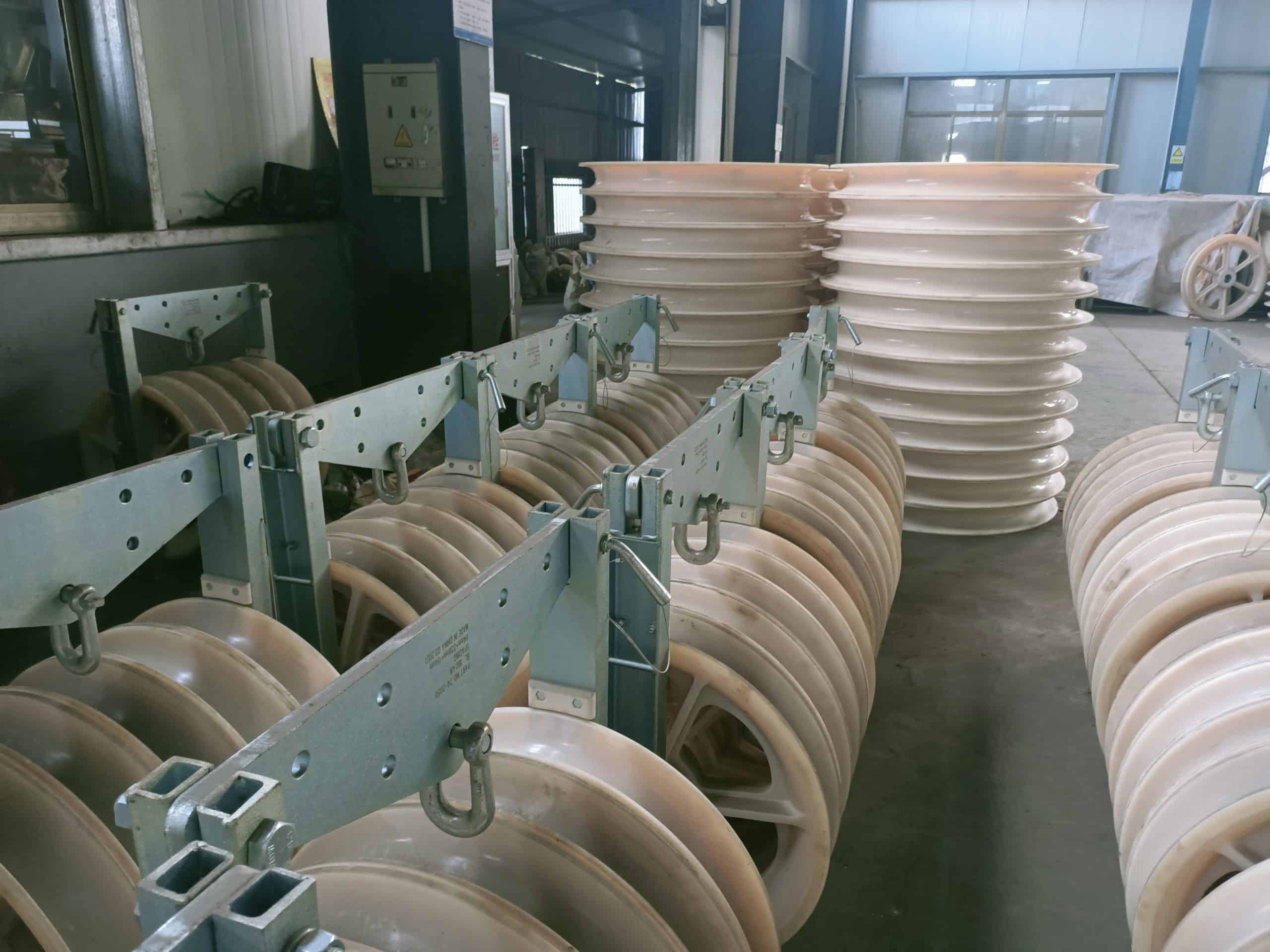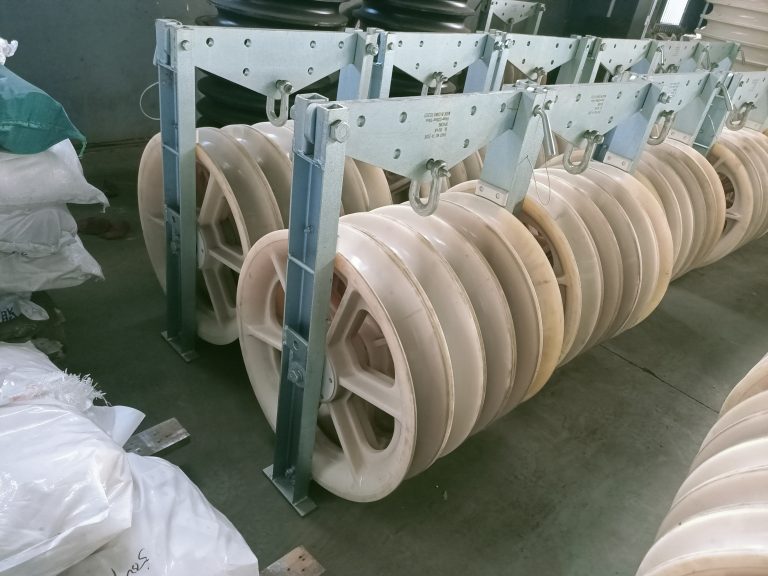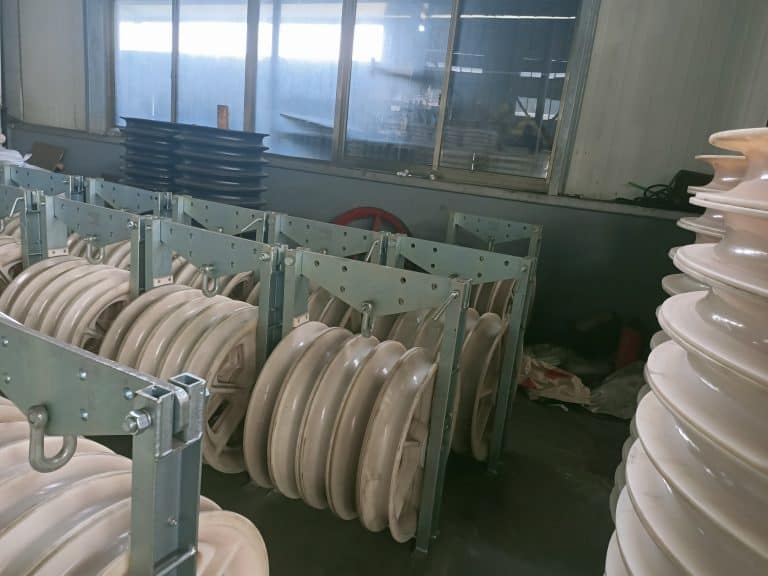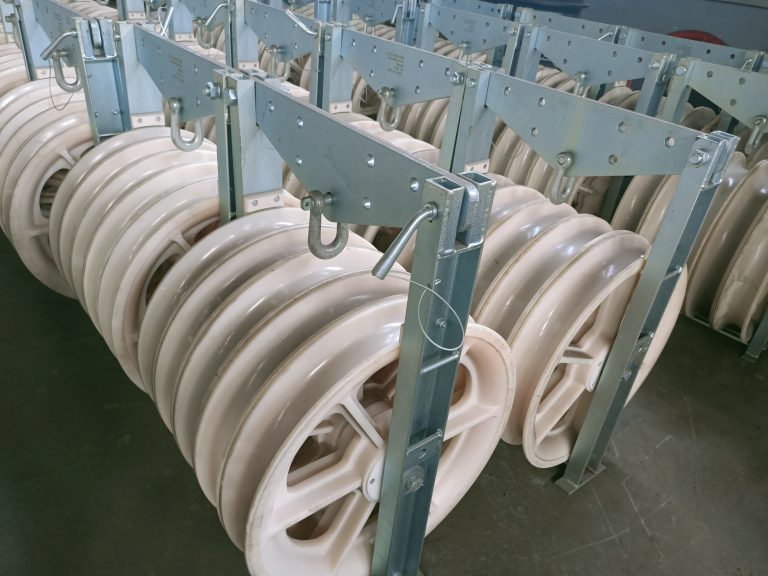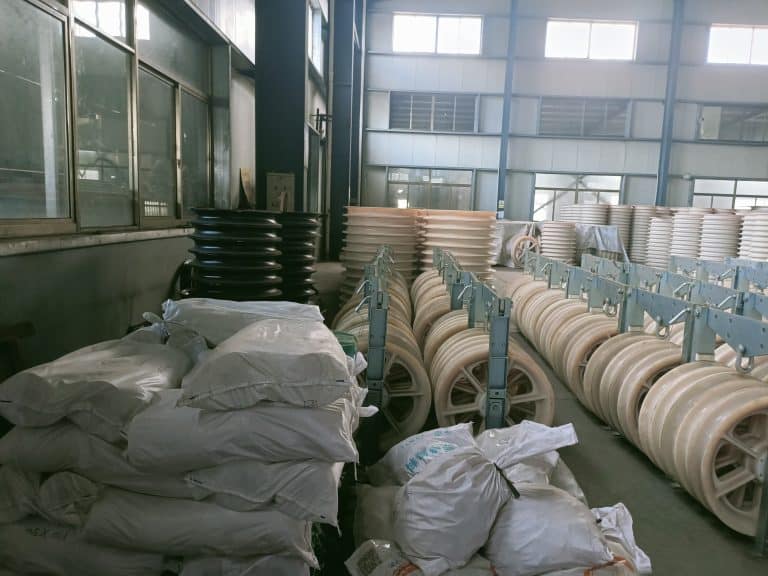The Crucial Role of Transmission Line Stringing Blocks in Power Grid Maintenance and Safety
Transmission line stringing blocks play a crucial role in the construction and maintenance of power…
Transmission line stringing blocks play a crucial role in the construction and maintenance of power transmission lines. These blocks are designed to support the weight of the conductors as they are strung between the towers or poles that form the transmission line. In this blog, we will explore the importance of transmission line stringing blocks and how they contribute to the efficient and safe operation of power grids.
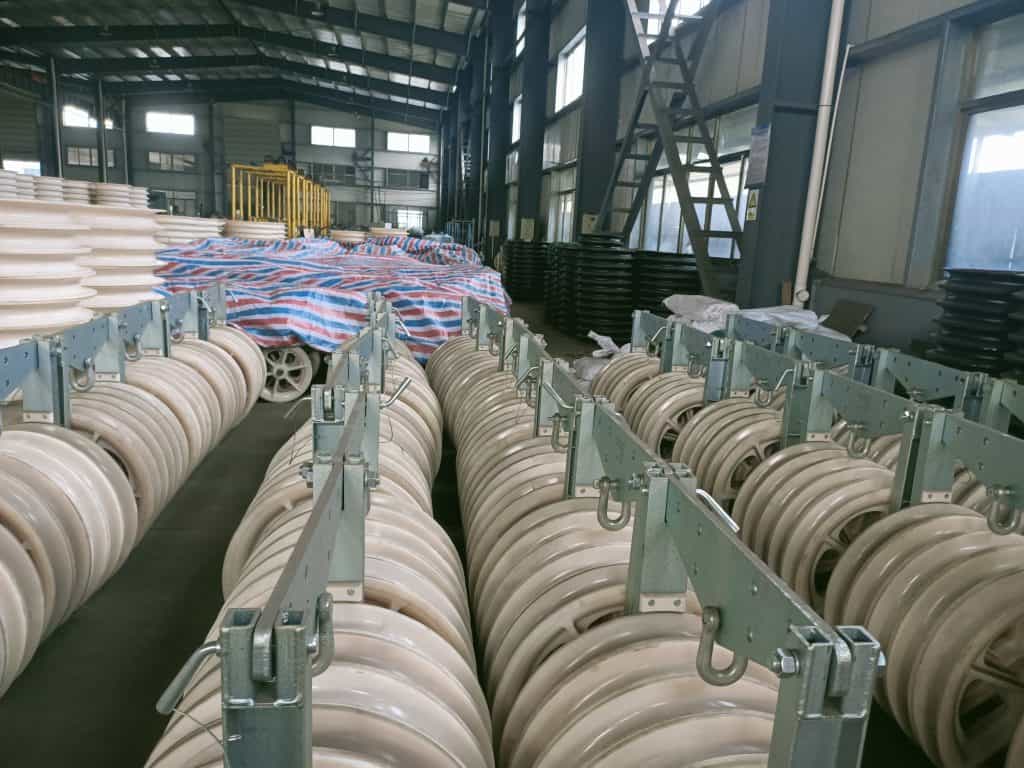
Transmission line stringing blocks are used to guide and support the conductors as they are pulled or pushed through the various stages of stringing, tensioning, and sagging. They are essentially pulleys that are designed to reduce the friction and tension on the conductor, thereby preventing damage to the conductor and ensuring that it is correctly positioned on the transmission line. These blocks come in different sizes and configurations, depending on the type and size of the conductor and the specific requirements of the transmission line project.
One of the main benefits of using transmission line stringing blocks is that they help to reduce the stress and strain on the conductor during installation and maintenance. This is important because power transmission lines are subject to significant temperature changes, wind loads, and other environmental factors that can cause the conductor to expand and contract, sag, or even break. By using stringing blocks, the conductor is supported and guided in a way that reduces these stresses, ensuring that it remains stable and secure over time.
Another key advantage of using transmission line stringing blocks is that they make the process of stringing and tensioning the conductor more efficient and cost-effective. With the help of these blocks, the conductor can be pulled or pushed along the entire length of the transmission line, without the need for manual lifting or pulling. This saves time and reduces the risk of injury or damage to the equipment.
In addition to their primary role of supporting and guiding the conductor, transmission line stringing blocks also have important safety functions. For example, they help to prevent the conductor from coming into contact with other objects or structures during installation or maintenance. They also reduce the risk of electrical arcing or other hazards by ensuring that the conductor is correctly positioned and tensioned.
Overall, transmission line stringing blocks are essential components of power transmission line construction and maintenance. They play a vital role in ensuring the safety, reliability, and efficiency of the power grid, and are used in projects of all sizes and complexities. As such, it is important for engineers and technicians involved in power transmission to have a thorough understanding of how these blocks work and how to select and use them effectively.

